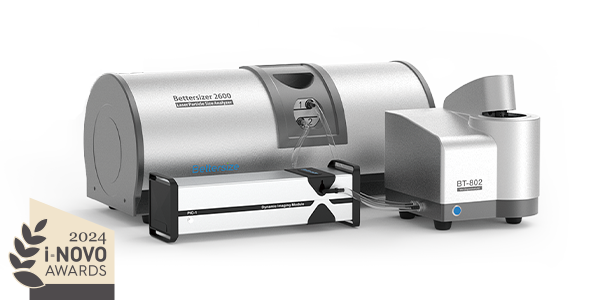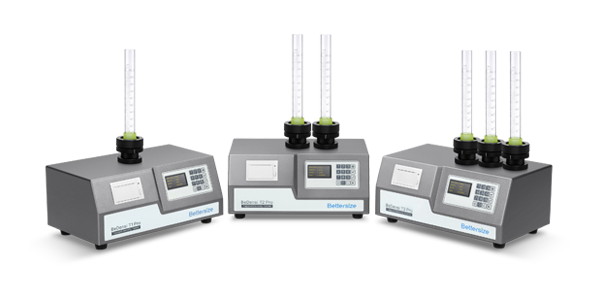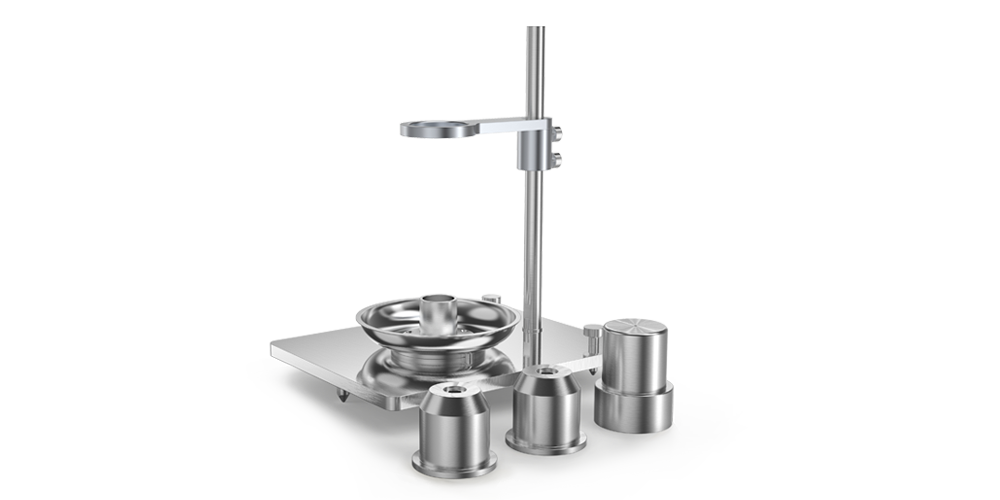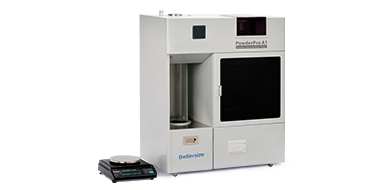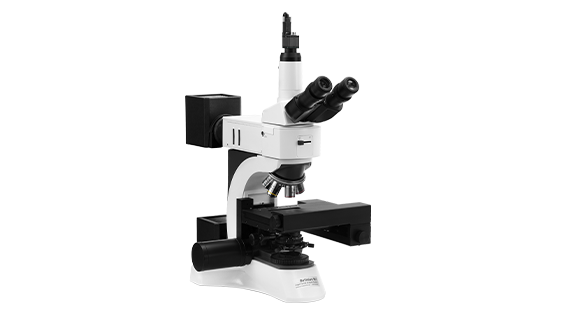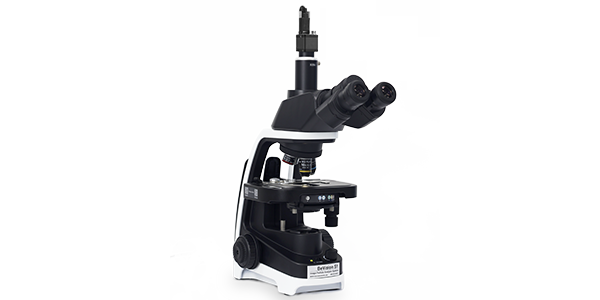Minería y minerales
Los instrumentos de análisis de tamaño y forma de partículas Bettersize se utilizan ampliamente en la investigación, fabricación y aplicación de todo tipo de minería y minerales, aportando beneficios favorables.
El analizador de tamaño y forma de partícula Bettersize y el probador de características de polvo pueden proporcionar un análisis completo de propiedades físicas y análisis de granulometría para el procesamiento profundo de la minería y los minerales, y ofrecen datos que incluyen la distribución del tamaño de partícula, la forma de la partícula, la fluidez, la densidad de toma y la densidad aparente, ayudándole a reducir el coste del procesamiento de minerales y a controlar los grados de partículas correctos de los productos.
Abrasivos, Fluorita, Galio, Mica, Ceniza de sosa, Antimonio, Granate, Molibdeno, Arsénico, Níquel, Estroncio, Amianto, Germanio, Niobio, Azufre, Barita, Oro, Talco, Bauxita, Grafito, Tántalo, Berilio, Yeso, Perlita, Telurio, Bismuto, Hafnio, Roca fosfórica, Talio, Boro, Platino, Torio, Bromo, Indio, Potasio, Estaño, Cadmio, Yodo, Piedra pómez, Titanio, Cemento, Hierro y Acero, Cristal de cuarzo, wolframio, cesio, mineral de hierro, tierras raras, vanadio, cromo, pigmentos de óxido de hierro, renio, vermiculita, arcillas, cianita, rubidio, wollastonita, cobalto, plomo, itrio, cobre, cal, arena, zeolitas, diamante, litio, escandio, cinc, diatomita, magnesio, selenio, circonio, feldespato, manganeso y silicio son materiales que se extraen de la mina y del mineral. Si se extrae, la medición de la distribución granulométrica en la extracción de minerales útiles es una tarea ardua y técnicamente exigente. El mineral se explota o se corta, se carga y se transporta al molino para la trituración y molienda secundarias que preparan el material para el uso previsto.
Conminución
En muchos casos, los minerales valiosos están mezclados con ganga y hay que separar la mena. El primer paso de muchos procesos de separación es la trituración (reducción de tamaño) seguida de la clasificación (separación por tamaño de partícula), ya sea para la posterior molienda o para el siguiente paso, la concentración del mineral. Durante la trituración, el mineral debe molerse de forma que las partículas sean lo suficientemente pequeñas como para que cada una de ellas esté formada principalmente por un mineral. A continuación, estas partículas se separan para concentrar el producto mineral.
Separación por gravedad
La separación por gravedad se basa en las diferencias de masa del material para separar los minerales. Los métodos incluyen plantillas, esclusas, espirales, mesas vibratorias, separadores de partículas finas, hidrosificadores y ciclones. La separación por gravedad se basa únicamente en el peso y se ve directamente afectada por el tamaño de las partículas, ya que el volumen es proporcional al peso.
El jigging utiliza un flujo de agua pulsada o un proceso similar para empujar hacia arriba el material molido.
Las partículas más pesadas y de mayor tamaño se hunden más rápidamente entre los pulsos y tienden a depositarse en el fondo del jig. Por lo tanto, es importante que el tamaño de las partículas sea uniforme para garantizar la separación por densidad y no por tamaño. Además, el funcionamiento (duración de los impulsos de agua) y el diseño de la plantilla dependerán del tamaño de las partículas que se separen. Las esclusas y las espirales se basan en la diferencia entre el arrastre viscoso y la flotabilidad para separar las partículas. Esta diferencia está directamente relacionada con el tamaño de las partículas. Las mesas de gravedad utilizan una plataforma vibratoria para separar por tamaño de partícula y gravedad específica. De este modo, las alimentaciones con una distribución de tamaños estrecha dan como resultado una mejor separación.
Flotación por espuma.
Aquí el material se separa por química superficial. Las burbujas que fluyen a través de un lodo o suspensión tienden a adherirse a las partículas con una superficie hidrófoba y hacen que las partículas floten hasta la parte superior de una espuma para su recuperación. A menudo, las superficies de las partículas se modifican selectivamente para que las superficies de los minerales sean hidrófobas y las de la ganga sean hidrófilas. El tamaño de las partículas es importante para la eficacia del proceso. Las partículas demasiado finas pueden ser arrastradas en el flujo de burbujas independientemente de la química de la superficie, reduciendo la eficacia de la eficiencia de separación. Las partículas demasiado grandes tenderán a hundirse independientemente de la fijación de la burbuja.
Separación electrostática y magnética
El comportamiento de una partícula bajo campos electrostáticos o magnéticos puede aprovecharse para separar partículas por tipos. Estos campos inducirán cargas (o magnetismo). Las fuerzas resultantes harán que las partículas se muevan en función de su masa. Así, las partículas pequeñas se desplazan más que las grandes. Además, la carga de las partículas es un fenómeno de superficie y la mayor superficie de las partículas finas tenderá a tener una carga mayor. Estos efectos del tamaño pueden conducir a la separación por tamaño en lugar de por composición. Por ello, una distribución de tamaños estrecha suele conducir, aunque no siempre, a una mejor separación.
Envío del producto
El producto final suele clasificarse y venderse tal cual o para su posterior procesamiento. Los usuarios querrán un determinado rango de tamaños de partícula para asegurarse de que su proceso está optimizado. Así pues, en el importantísimo paso de la venta de productos, muchas minas controlarán el tamaño de las partículas y, en algunos casos, la forma de las partículas también es importante.
Los sistemas de granulometría que se indican a continuación son totalmente capaces de medir el tamaño y la forma para ayudar al usuario a obtener el tamaño óptimo en todo el proceso de fabricación.
Citations
- Bettersizer 2600
Functional redundancy as an indicator for evaluating functional diversity of macrobenthos under the mussel raft farm near Gouqi Island
DOI: 10.1016/j.aquaculture.2023.740024 Read ArticleZhejiang Ocean University | 2024Biological traits analysis (BTA) helps to evaluate the effects of different environmental variables on the traits-based functional composition of macrobenthos. However, research on functional traits of macrobenthos under mussel farming is limited. We investigated the spatial and temporal response of the benthic system in terms of taxonomic and functional diversity to environmental variables of farming and natural stressors resulting from suspended mussel farming near Gouqi Island of eastern China Sea. The functional traits of macrobenthic assemblages under mussel farming were characterized by “medium adult body size”, “vermiform body form”, “high flexibility”, “infauna”, “semi-motile”, “gonochoristic”, “surface deposit-feeders”, “carnivores”, “semi-motile burrowers”, and “tube-dwellers”. Functional redundancy was stable in response to mussel farming stresses among seasons, whereas species diversity showed efficient to evaluate natural variables. Functional diversity was significantly affected by farming stressors rather than natural variables, Further analysis using multivariate methods together with continuous monitoring were highlighted to evaluate the impacts of mussel farming. Our results reinforce the importance of macrobenthic species and functional traits analysis to evaluate human stresses driven impacts in offshore ecosystems. By analysing the environmental variables with different sources, independently, we concluded the main effects of human pressures on macrobenthic community. Such distinction could be particularly effective to isolate variable environmental descriptors and evaluate their effects on functional diversity, making the current approach promising for the evaluation of ecological effects of anthropogenic stressors in aquaculture areas. - Bettersizer 2600
Degradation characteristics and utilization strategies of a covalent bonded resin-based solid amine during capturing CO2 from flue gas
DOI: 10.1016/j.seppur.2023.125621 Read ArticleChina University of Petroleum | 2024In this study, various types of degradation as well as attrition which are possibly encountered in a circulating fluidized bed temperature swing adsorption (CFB-TSA) process, were conducted experimentally to evaluate the stability of a resin-based solid amine sorbent. Other characterizations methods, such as elemental analysis (EA), Fourier transform infrared spectroscopy (FTIR) etc. were applied to further reveal the degradation mechanisms. The results showed that thermal degradation occurs from 140–160 °C due to the decomposition of amine group. The CO2-induced degradation occurs from a higher temperature of 160–180 °C accompanied by the production of urea. Hydrothermal stability is good below 130 °C, but the ionic impurities in steam crystalized on particle surface can accelerate the degradation. Oxidative degradation is the most harmful, which starts at a lower temperature of 70–80 °C with the formation of aldehyde. The existence of H2O in atmosphere can alleviate the oxidative and CO2-induced degradations. The employed sorbent has a very low attrition index of 0.05, which is 1–2 orders lower than typical commercial fluidized bed catalysts. Based on the results of stability evaluation, some design suggestions for proper utilization of this sorbent or other similar resin-based sorbents have been provided in an industrial CFB-TSA process.
- Bettersizer 2600
De-branching of starch molecules enhanced the complexation with chitosan and its potential utilization for delivering hydrophobic compounds
DOI: 10.1016/j.foodhyd.2023.109498 Read ArticleShihezi University | 2024The current study aimed to prepare the complexes between debranched-waxy corn starch and chitosan polymers (DBS-CS), and then investigated their corresponding structural characteristics, rheological property and potent application in Pickering emulsion. The results indicated that the existence of chitosan significantly inhibited starch short-range molecular rearrangement for all DBS-CS samples, which was manipulated by both debranching treatment and chitosan content. Interestingly, this is the first study to reveal that the outstanding peak at 1.8 ppm in 1H NMR spectrum for sample DBS-CS was gradually shifted towards a lower-field region following an increased chitosan content. Moreover, the debranching treatment shifted the crystallinity pattern from A-type to B-type and the relative crystallinity of DBS-CS decreased gradually with the increased content of CS. All samples had a pseudoplastic fluid and shear-thinning behavior with an enhanced shear resistance following the complexation. The DBS-CS was applied in a Pickering emulsion for showing a greater emulsifying stability and a lower gel strength than native NS-CS prepared emulsion. Importantly, the encapsulation ability of curcumin in the DBS-CS emulsion was significantly improved, followed by an increase of 15.45% for its corresponding bioavailability compared to the control. Therefore, this study might highlight a potential carrier for delivering the bioactive substances in a green pattern. - Bettersizer 2600
Heat-induced aggregation behavior of wheat gluten after adding citrus pectin with different esterification degree
DOI: 10.1016/j.foodhyd.2023.109420 Read ArticleGansu Agricultural University | 2024Wheat gluten aggregation during heat treatment is beneficial to the final quality of gluten-based products. Exogenous pectin can affect gluten aggregation. However, the effect of pectin with different degrees of esterification on the heat-induced aggregation behavior of gluten and its possible mechanism are still unclear. Thus, the heat-induced aggregation behavior of gluten after adding pectin with different esterification degree was studied in this study. When the temperature was raised from 25 °C to 95 °C, pectin affected gluten aggregation and was related to the degree of esterification. Specifically, the results of rheological properties and particle size indicated that low-ester pectin improved the viscoelasticity of gluten and promoted gluten aggregation. Thermal properties revealed that enthalpy of gluten added with low-ester pectin (37%) increased from 92.96 J/g to 95.40 J/g during heating process. Structurally, the fluorescence intensity and surface hydrophobicity of gluten added with low-ester pectin (37%) were lower than those added with high-ester pectin (73%). In addition, low-ester pectin (37%) significantly increased the disulfide bond content (from 15.31 μmol/g to 18.06 μmol/g) and maintained β-sheet content of gluten compared with gluten alone at 95 °C, indicating that low-ester pectin was more likely to induce gluten aggregation. However, scanning electron microscope showed that the gluten added with low-ester pectin (46%) exhibited a denser network structure at 95 °C than that added with low-ester pectin (37%). These results will provide a theoretical base for the regulation of gluten aggregation and the quality of gluten-based products by pectin with different esterification degree.
- 1
- 2
- 3
- 4
- 5
- 6
- 84
Recursos seleccionados
Analizador granulométrico relacionado
-
Bettersizer S3 Plus
Particle Size and Shape Analyzer
Measurement range: 0.01 - 3,500μm (Laser System)
Measurement range: 2 - 3,500μm (Image System)
-
Bettersizer 2600
Laser Diffraction Particle Size Analyzer
Measurement range: 0.02 - 2,600μm (Wet dispersion)
Measurement range: 0.1 - 2,600μm (Dry dispersion)
Measurement range: 2 - 3,500μm (Dynamic imaging)
-
BeDensi T Pro Series
Tapped Density Tester with a Wallet-Friendly Solution
Number of Workstations: 1-3
Tapping Speed: 100 - 300 taps/min
Repeatability: ≤1% variation
-
BeDensi B1
Bulk Density Tester
Measurement: Bulk Density
Compliance with GB/T 16913
-
HFlow 1
Flowmeter Funnel
Measurement: Bulk density and Flow rate
Compliance with USP, Ph. Eur., ASTM, and ISO standards
-
PowderPro A1
Automatic Powder Characteristics Tester
Operation Mode: Automatic
Tapping Speed: 50 - 300 taps/min
Repeatability: ≤3% variation
-
BeVision D2
Dynamic Image Analyzer
Dispersion type: Dry
Measurement range: 30 - 10,000μm
Technology: Dynamic Image Analysis
-
BeVision M1
Automated Static Image Analyzer
Dispersion type: Dry
Measurement range: 0.3 - 10,000 μm
Technology: Static Image Analysis
-
BeVision S1
Classical and Versatile Static Image Analyzer
Dispersion type: Dry & Wet
Measurement range: 0.3 - 4,500 µm
Technology: Static Image Analysis





